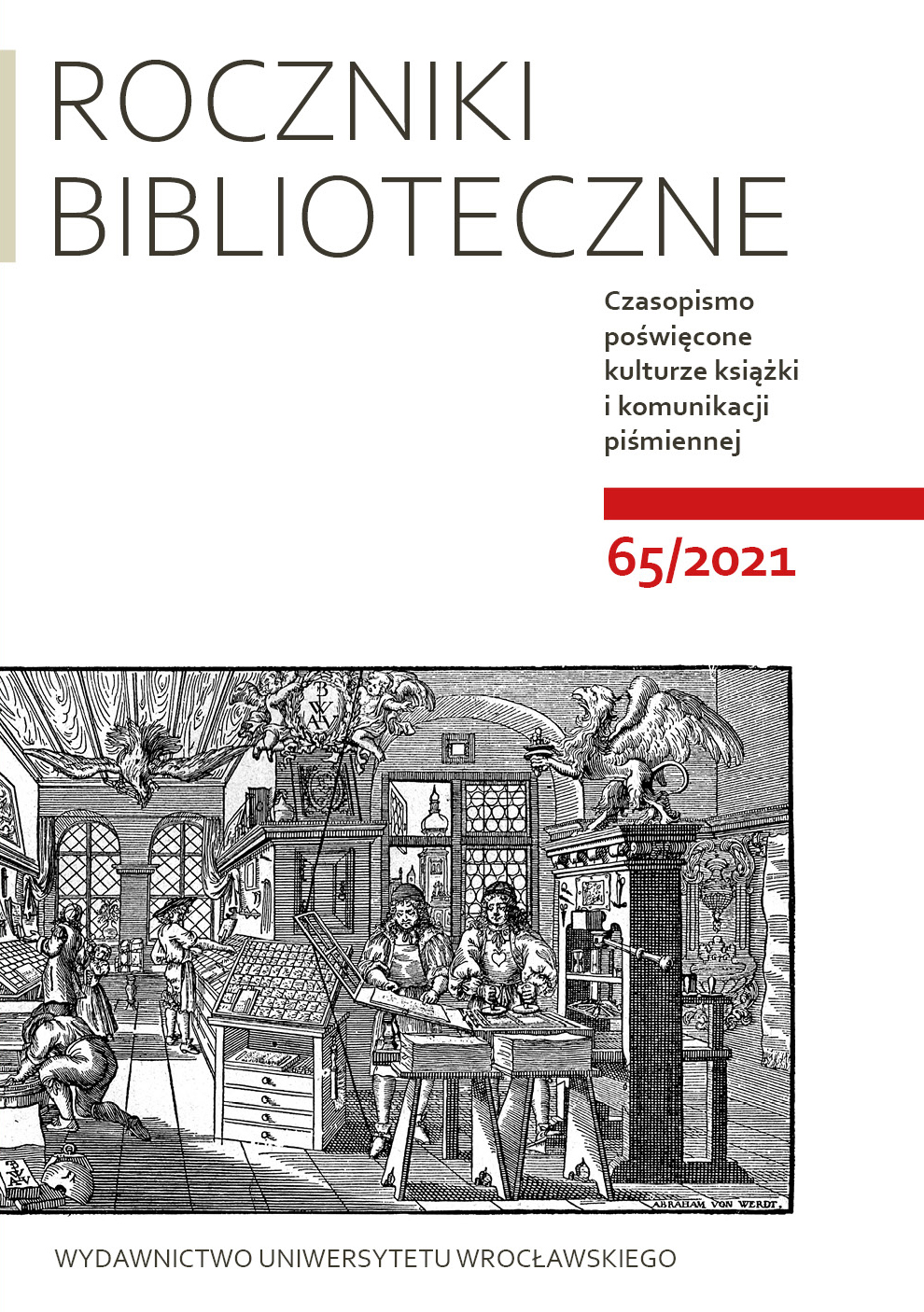Dystrybucja wydawnictw stowarzyszenia Hałycko-Ruska Matyca w połowie XIX wieku: organizacja, wyniki, oceny społeczne
The distribution of publications of the society Halytsko-Ruska Matytsia in the middle of the 19th century: Organization, quantative measurement, public assessments
Author(s): Oleksandr SedliarSubject(s): Social Sciences, Language and Literature Studies, Education, Sociology of Education, Sociology of Literature
Published by: Wydawnictwo Uniwersytetu Wrocławskiego
Keywords: history of Ukrainian books; history of bookselling; bookstores in Galicia; education of the people in the XIX century; Greek Catholic clergy; Halytsko-Ruska Matytsia Society
Summary/Abstract: The main task of the Ruthenian (Ukrainian) society Halytsko-Ruska Matytsia (Galician-Ruthenian Matytsia), founded in Lviv in 1848, was to publish and distribute cheap literature for the people. During the 1850s, 1860s and 1870s there were three groups of distributors: (1) the bookstore of the Stauropegion Institute in Lviv; (2) other bookstores that belonged to non-Ruthenians; (3) private distributors, almost exclusively Greek Catholic priests in the province. Most of Matytsia's publications were sold by the bookstore of the Stauropegion Institute (approximately 40% in value in the 1850s and mid-1860s). It is known that in the 1850s 5 other bookstores collaborated with Matytsia, in the 1860s and early 1870s – 15 other bookstores in 11 cities. The number of private distributors was significant – almost 120 in the 1850s and almost 70 at the turn of the 1860s and 1870s. The bookstores received a commission for the sale of books (from 10 to 20% of their value), and individual distributors often worked for free. Halytsko-Ruska Matytsia most actively sent its books for sale in 1850–1854, 1864–1865 and 1870–1873. Matytsia's publications were intended for different readers, intelligentsia and peasants. The bookstore of the Stauropegion Institute offered a full range of publications, while other bookstores focused primarily on quick sales and ordered books which were most popular among peasants – educational and religious-educational. Despite the efforts of the Matytsia managers to distribute publications, they were not available to most Ruthenian peasants, which sometimes provoked criticism in the press.
Journal: Roczniki Biblioteczne. Czasopismo poświęcone kulturze książki i komunikacji piśmiennej
- Issue Year: 65/2021
- Issue No: 1
- Page Range: 97-120
- Page Count: 24
- Language: Polish

